Research areas & Applications
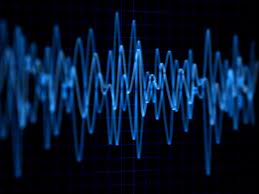
Signal Processing Research
objective of the Manuro Advanced Signal Processing Group is to develop high performance, robust and efficient signal processing techniques for the advancement of modern communication systems and other areas of engineering. Our work covers a wide range of the development cycle: from fundamental algorithm design and analysis, through analytical and simulation-based performance evaluation and testing on `real-world' data, to the development of software for the implementation of the algorithms on Digital Signal Processor (DSP) boards. The algorithms are applied to a diverse range of communication systems, including wire-line, cellular and satellite system, radar and array signal processing, and target identification and tracking. In addition, the generic nature of our algorithm design and analysis has exposed further applications in speech processing, optimal control, finance and time series forecasting.
Image Processing Research
Manuro Tech Research has unique expertise in the application of a diverse range of computational intelligence methods applied to Image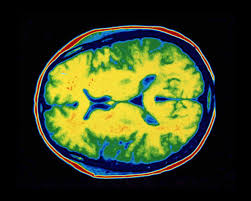 processing problems. Many results and algorithms we developed are generic in their nature and find their use in numerous application areas. This includes digital photography, surveillance systems, image forensics, biomedicine, remote sensing, astronomy and art conservation. The research is focused in the following areas:
processing problems. Many results and algorithms we developed are generic in their nature and find their use in numerous application areas. This includes digital photography, surveillance systems, image forensics, biomedicine, remote sensing, astronomy and art conservation. The research is focused in the following areas:
- High speed image analysis with application to engineering problems
- Multi-camera, distributed imaging systems
- Visual computing and communications
- 3D visualization
- Image and video compression
- Image and video indexing and retrieval
- VLSI architectures for multimedia processing
- Medical imaging.
VLSI Circuit Optimization Research
 The Manuro Circuit Optimization Research group is focus to CAD development of electronic devices and circuits. We focus on applications in the high speed, low power, less chip area, fault tolerant based VLSI circuit optimization. Engineers have been using optimization techniques for device, component and system modeling and CAD for decades. One of the frontiers that remain is the successful application of optimization procedures in problems for which direct application of traditional optimization approaches is not practical. The recent exploitation of intelligent computing has given high hopes for VLSI automation at every level like. synthesis, physical design and fabrication. We are also developing tools for high computing architecture design like systolic architecture, wave front architecture to meet the requirement of supercomputing.
The Manuro Circuit Optimization Research group is focus to CAD development of electronic devices and circuits. We focus on applications in the high speed, low power, less chip area, fault tolerant based VLSI circuit optimization. Engineers have been using optimization techniques for device, component and system modeling and CAD for decades. One of the frontiers that remain is the successful application of optimization procedures in problems for which direct application of traditional optimization approaches is not practical. The recent exploitation of intelligent computing has given high hopes for VLSI automation at every level like. synthesis, physical design and fabrication. We are also developing tools for high computing architecture design like systolic architecture, wave front architecture to meet the requirement of supercomputing.
Computer Network Research
The Manuro computer networks research group involved in a variety of leading-edge research in key areas relating to wireless and wire 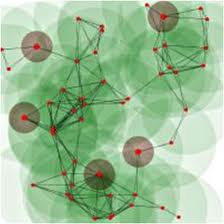 line communication networks using natural computing. These activities currently include the design and performance modeling of systems which support cellular and wireless applications. Some activities currently in progress:
line communication networks using natural computing. These activities currently include the design and performance modeling of systems which support cellular and wireless applications. Some activities currently in progress:
- Quality-of-service provisioning for multimedia traffic
- WSN life enhancement
- Sensor Position localization in WSN.
- Intelligent routing algorithm development.
- Intelligent Cryptography
Machine Learning Research
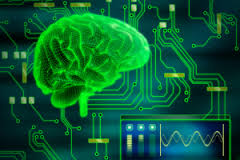 The Manuro Machine Learning research group has focused on building methods and tools to learn from data or discover the rules hidden in data. By building software that automatically learns from data, we enable applications to behave more intelligently and enable users to become more productive. We strive to advance the state of the art in machine learning and statistics, develop fast scalable algorithms for learning and mining, implement portions our work in toolkits, and apply our work to numerous applications. We have hybridized the natural computing with statistics to improve the quality of performances. At present we are focus over following areas:
The Manuro Machine Learning research group has focused on building methods and tools to learn from data or discover the rules hidden in data. By building software that automatically learns from data, we enable applications to behave more intelligently and enable users to become more productive. We strive to advance the state of the art in machine learning and statistics, develop fast scalable algorithms for learning and mining, implement portions our work in toolkits, and apply our work to numerous applications. We have hybridized the natural computing with statistics to improve the quality of performances. At present we are focus over following areas:
- Intelligent Input Interaction: We work on methods for improving the ability of users to control and utilize computer systems with voice, handwriting, typing, dialog etc.
- Natural language processing:We are working on machine-learning methods for processing and natural language, including methods for text/data classification, text/data clustering, question answering and grammar checking.
- Data mining and analysis: We have developed methods for mining and visualizing patterns from large data sets including (1) algorithms for prediction and segmentation based on statistical method (2) methods that semi-automate the process of data analysis/mining, (3) algorithms that dramatically decrease the time to mine large data sets, and (4) new tools for data visualization and exploratory data analysis.
- Computational biology: We are developing and applying machine learning technology to biology data. Recently we are working over protein folding structure.
Nanotechnology Research
Nanotechnology has made tremendous progress in recent years. Evolutionary techniques such as neural networks have good scope with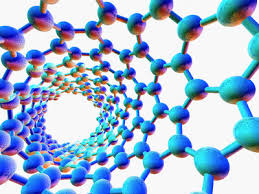 Nano-computing. Historically, classical computer concepts and underlying technologies have been invented by mathematicians and physicists rather than engineers. It was engineers, however, who took basic concepts and ideas and created the practical powerful and inexpensive computers of today. We believe that the same will happen in case of Nano-computing and quantum computing. Currently there are several research groups in the field of nanotechnology, Nano-architectures, Nano-computing, quantum computing, quantum circuits and quantum information that are addressed to physicists, mathematicians and theoretical computer scientists. Although quantum computing (as a sub-field of nanotechnology) is still in its nascent days, there have been experiments that successfully perform quantum computation on a small number of qubits. This is one of most active research domain where we are exploring the possibilities to integrate the natural computing with core nanotechnology and Quantum computing .There are various dimension over which we are focused and these are:
Nano-computing. Historically, classical computer concepts and underlying technologies have been invented by mathematicians and physicists rather than engineers. It was engineers, however, who took basic concepts and ideas and created the practical powerful and inexpensive computers of today. We believe that the same will happen in case of Nano-computing and quantum computing. Currently there are several research groups in the field of nanotechnology, Nano-architectures, Nano-computing, quantum computing, quantum circuits and quantum information that are addressed to physicists, mathematicians and theoretical computer scientists. Although quantum computing (as a sub-field of nanotechnology) is still in its nascent days, there have been experiments that successfully perform quantum computation on a small number of qubits. This is one of most active research domain where we are exploring the possibilities to integrate the natural computing with core nanotechnology and Quantum computing .There are various dimension over which we are focused and these are:
- Design Automation and Synthesis of Nano or Quantum circuits, analogous to traditional CAD of logic synthesis. The research includes using Genetic Algorithm, Genetic Programming and other evolutionary and biology mimicking methods to synthesize/optimize quantum circuits or Nano circuits.
- Programming languages and environments for quantum synthesis and algorithms.
- Quantum Computational Intelligence - all learning and problem-solving models known from Computational Intelligence such as Neural Nets, Bayes nets, Logic Networks, Fuzzy Logic, state machines, evolvable hardware, etc can be extended to those based on quantum circuits and automata.
- Design, testing and verification of practical quantum circuits, including quantum neural nets using various realization technologies.
- Using GA, GP and other evolutionary paradigms in all areas of quantum circuits, quantum information and quantum computing.
- Fault-tolerant and defect-tolerant Nano-computing using evolutionary techniques.
- Neural Networks and their applications in Nano-architectures and nanotechnology.
- Nanotechnology based on hybrid CMOS/Molecular (CMOL) techniques.
- Evolutionary Computing and Quantum Nanotubes.